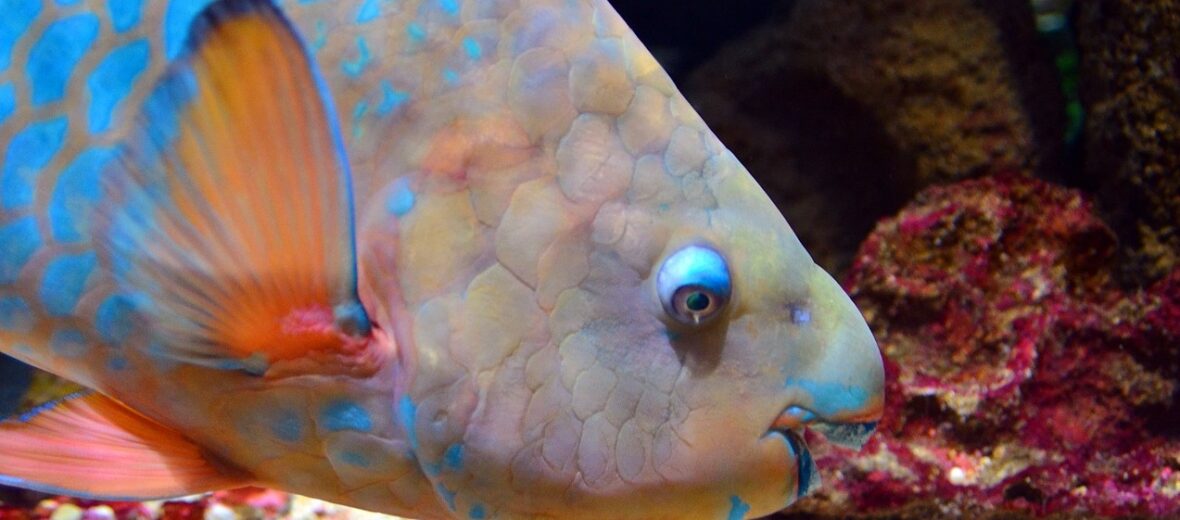
The parrotfish is a semi-custodial fish that lives amongst the coral reefs, rocky coasts, and seagrass beds. There are approximately 80+ known species of parrotfish, to date. They come in a variety of colors and patterns. The largest concentration of these fish can be found in the Indo-Pacific. These fish are abundant enough to be listed as Least Concern by the IUCN, across all their species.
First the Stats…
Scientific name: Scaridae
Weight: Up to 45 lbs.
Length: Up to 4 feet
Lifespan: Up to 7 years
Now on to the Facts!
1.) They get their name from their numerous, tightly packed, fused teeth that form a sort of beak which resembles a parrot’s beak.
2.) Besides their predominant fore teeth, they also have pharyngeal teeth, located in the back of their mouth which are used to crush hard substances.
3.) These fish are typically social and can be found in schools of around 40 individuals.
4.) A supermale exists in each school. This male is usually a sex reversed female that spends their days not only grazing but also in driving away competitor males.
5.) Their primary diet is algae, found on the reefs. However, they are omnivores (eat plant and animal matter) that also feast on corals as well.
But wait, there’s more on the parrotfish!
6.) Unfortunately, pollution, global warming, overfishing, and coastal development endanger coral reefs and thus cause a decline in parrotfish as well as other aquatic species.
7.) They swim in the same manner as wrasses, in that they sort of row themselves along via their pectoral fins (the fins located just behind their gills).
Did you know…?
A single parrotfish is capable of producing 1,000 lbs. of crushed sand annually! This is produced from ground coral that is later pooped out.
8.) These fish are diurnal (active during the day).
9.) At night, these parrots of the sea will bury themselves in the sand or even find a nice crevice to hide in and then encase themselves in a mucus cocoon.
10.) Some species have scales so tough that they can stop a spear!
But wait, there’s still more on the parrotfish!
11.) The primary predators are sharks, moray eels, and (when juveniles) other fish.
12.) In the United States, they aren’t hunted for their meat. But in places like Polynesia, their meat is considered a delicacy and is served raw. It was once called royal food and only consumed by the king.
13.) The blue parrotfish is not consumed by humans as it can cause ciguatera (fish-poisoning sickness). This disease can sometimes be fatal.
14.) These fish are sequential hermaphrodites. This means that most species start out as female and then transform to male as they age and/or as environmental situations dictate. The marbled parrotfish is the only species that doesn’t change gender.
15.) They are pelagic spawners in that females release eggs into the water to later be fertilized by the males. The fertilized eggs become part of the plankton chain till they settle into the coral and the fry hatch.
Now a Short Parrotfish Video!
Be sure to share & comment below! Also, check out the Critter Science YouTube channel. Videos added frequently!
Want to suggest a critter for me to write about? Let me know here.




Leave a Reply